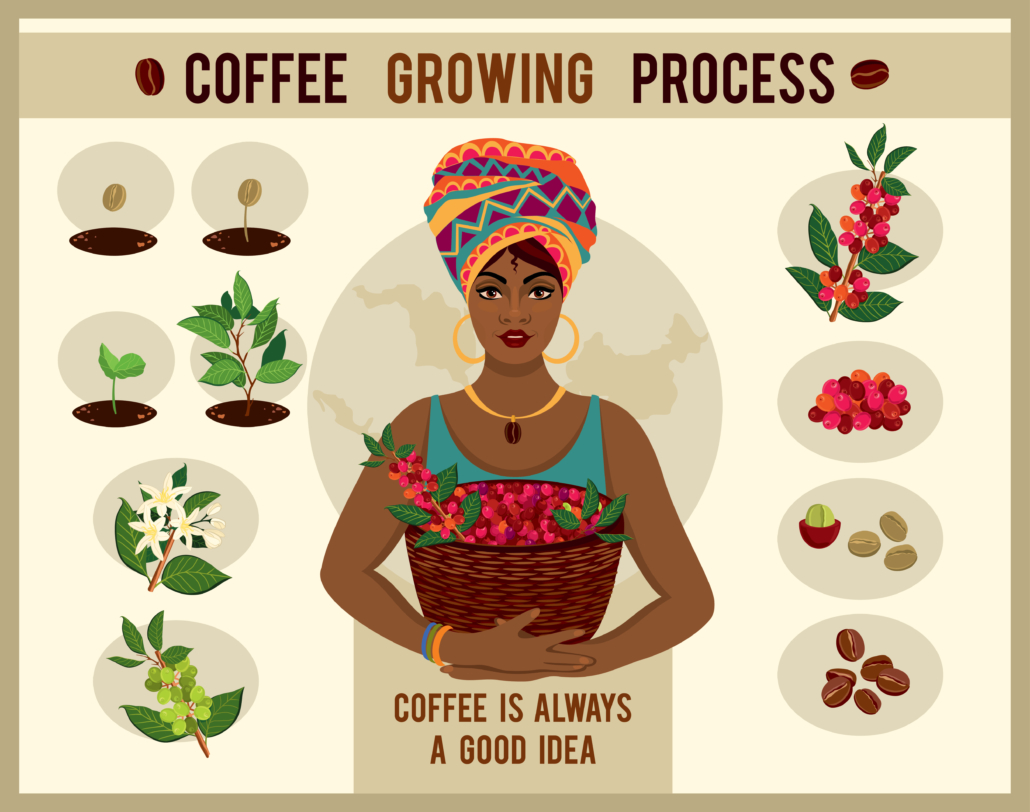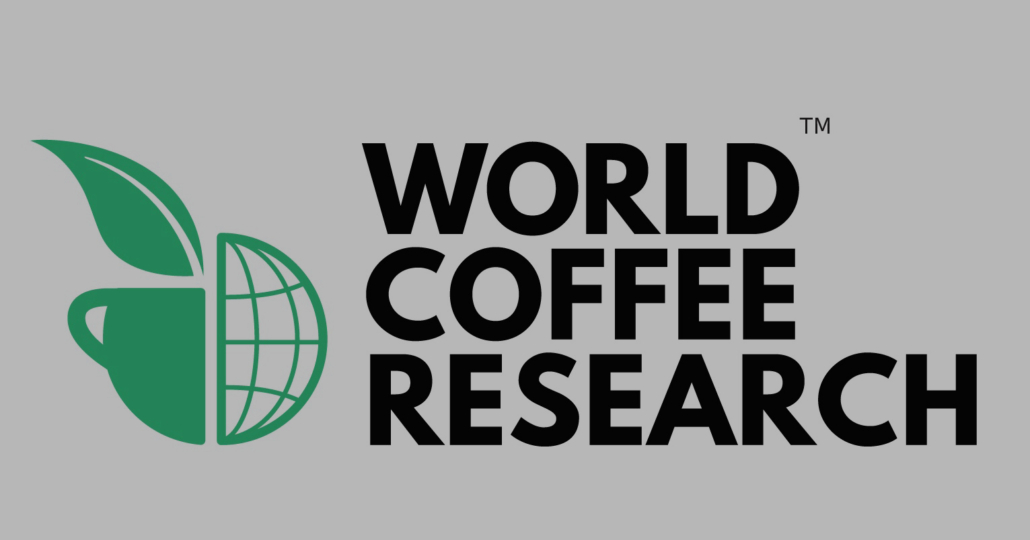World Coffee Research (WCR) has published its 2020 Annual Report which lists the organisation’s highlights from the year, which were achieved in collaboration with its global network of partners
The world was tested in unprecedented ways in 2020, and coffee agriculture was no exception. “The global pandemic proved beyond a doubt that diversity confers resilience, whether we are talking about individual coffee farms, roaster supply chains, entire global economies, or coffee genetic diversity” (World Coffee Research, 2021).
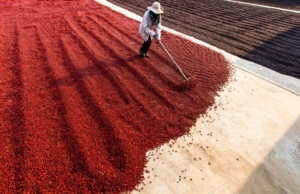
Coffee beans drying in the sun. Coffee plantations at coffee farm
The report saw 217 coffee companies, which according to the report represent one-fifth of the global market share, supporting WCR and the results from the 2020 report. World Coffee Research (WCR) is a non-profit research and development agricultural organization working in 29 coutries. The organization was founded with participation or funds from thirty coffee industry groups including the Specialty Coffee Association of America, Green Mountain Coffee Roasters, Peet’s Coffee & Tea, Counter Culture Coffee, the coffee importers InterAmerican Coffee, and specialty coffee providers Coffee Bean International (Wikipedia, 2021).

A cup of cappuccino coffee with a picture of a chain of dna
WCR has six main research areas:
- Coffee Genetics & Breeding: Today’s best coffee varieties are no match for the environmental threats of the 21st century—changing weather patterns, increased temperatures, and new disease and insect prevalence. This creates a potentially disastrous decline in supply in the coming decades. Focusing on coffee genetic improvement through work in the lab to identify key genes and genetic markers, and in the field to develop new varieties of coffee, is the most efficient way to ensure the future of coffee.
- Coffee Quality: Rapid coffee variety identification; Breeding for coffee quality; Defining quality targets for robusta breeding; Creating a sensory lexicon for coffee.
- Coffee Varieties: Rebuilding in Puerto Rico; Nursery Development Program; International multilocation variety trial; Variety intelligence.
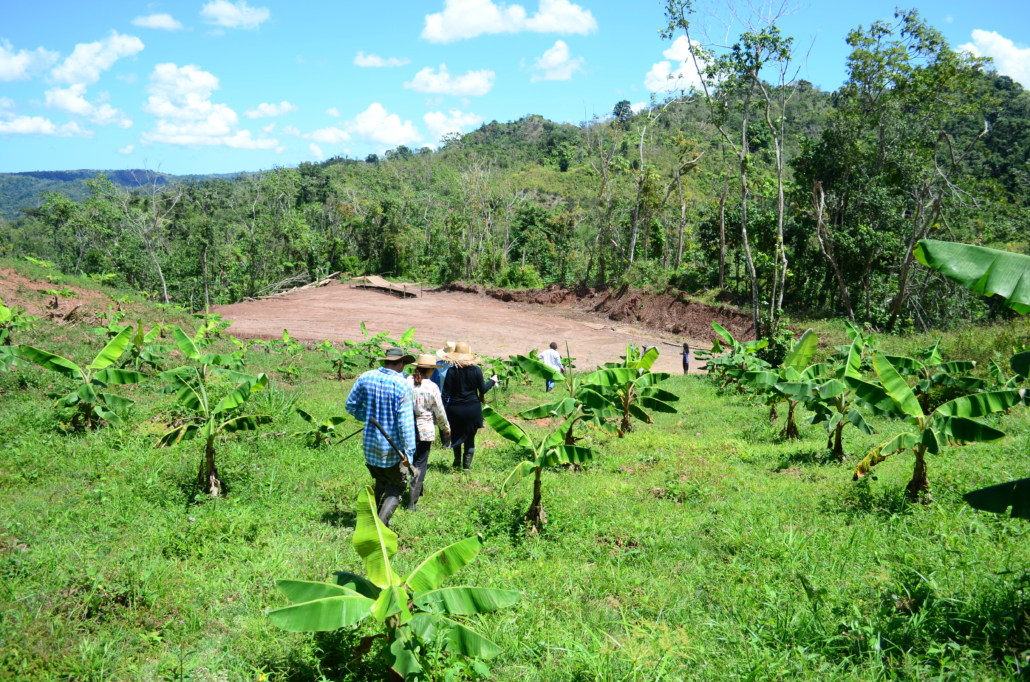
Group of farmers walking down the side of a mountain. Coffee and Plantain farm in Puerto Rico. Puerto Rican agriculture and farming. Anonymous farmers walking around a plantation.
- Climate Change: As temperatures rise and extreme weather grows more frequent, coffee becomes increasingly susceptible to diseases, pests, and drought, while productivity and quality both fall. But there are major gaps in our knowledge of how to best help coffee producers adapt to climate change. We are conducting fundamental research to understand the impacts of climate change on coffee in order to develop successful adaptation strategies.
- Supporting Farmer Profitability: Strengthening value chains in DRC; Global Coffee Monitoring Program; Sustainable incomes through coffee farming improvement.
- Coffee Diseases and Pests: Diseases and pests like coffee leaf rust and coffee berry borer cause billions of dollars of damage each year. The Central American coffee leaf rust epidemic that began in 2012 has resulted in the loss of over 1.7 million jobs. Outbreaks are becoming more frequent with rising temperatures. We are researching ways to help ensure the coffee plant—and coffee farmers—are more resilient in the face of these threats. (World Coffee Research website)*
*In our blog we already discussed the effects of the coffee berry borer on Hawaiian coffee.

Cup Taster Girl Tasting Degustation Coffee Quality Test. Coffee Cupping
In 2020, WCR evaluated 82 variety candidates and accessions of coffee beans, many of which were done for the first time. Cuppers from 22 organisations completed these evaluations, based on the best varieties for commercial release (Global Coffee Report, 2021).
The company also worked to increase coffee farmers access to trees that were healthy and genetically “pure” across Latin America. This included assessing 66 seed lots to ensure genetic purity and confirming wide-scale seed purity in order to produce 25.8 million trees annually.
The report also saw WCR supporting farmers with greater accessibility to high-quality plants across 16 countries. This was done through advancements in DNA fingerprinting, seed lot clean-up, and breeding program evaluation and training.
“I strongly believe that World Coffee Research opens the door to an unprecedented opportunity to shape collectively our sector’s research agenda to preserve diversity of Origins and improve the livelihoods of millions of farmers,” says Giacomo Celi, Sustainability Director of Mercon Coffee Group who announced a long-term partnership with WCR in early 2020.
A global total of 262 collaborative research trials were carried out directly in farmers’ fields to test variety performance in 14 countries.
The most up-to-date and complete study of Arabica genetic diversity was also released in 2020 as part of WCR’s goal to improve identity tracing. The report also confirmed the Arabica seed’s recent evolution.
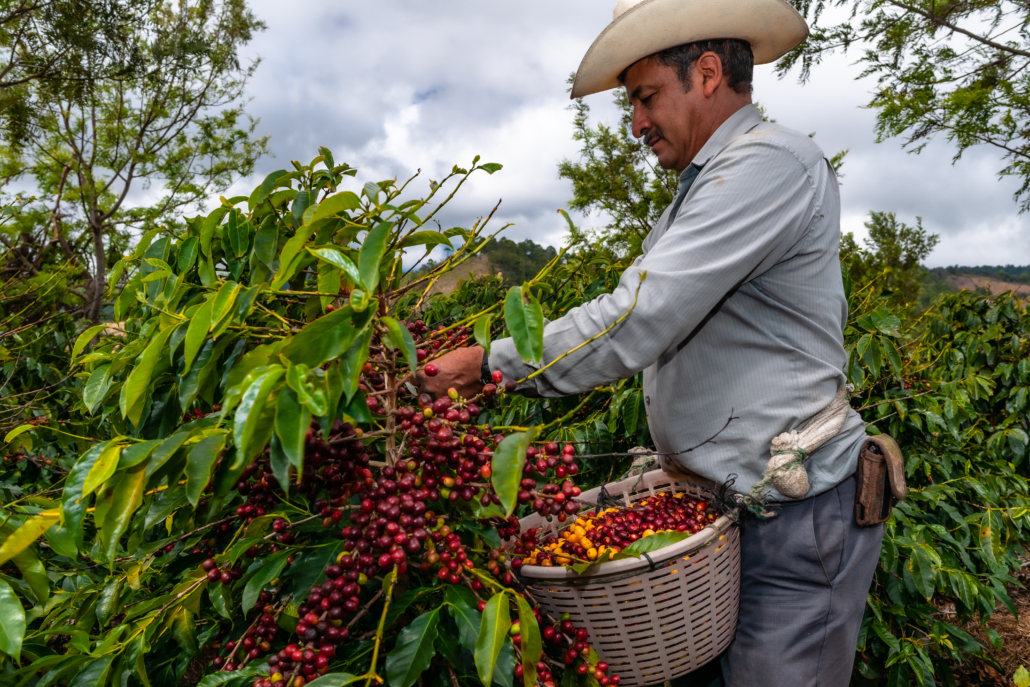
Guatemalan farmer collects his coffee crop on a plantation of Jalapa.
In Latin America, WCR also launched its newest hub in collaboration with member countries of Promecafe, and the hub’s Honduras host, Ihcafe. These hubs provide the region with access to breeding populations, experience, and materials that can create new varieties of coffee that benefit local coffee producers.
WCR’s new strategy was based on 137 interviews and 898 stakeholder surveys with individuals from across the supply chain. This data, combined with WCR’s foundational efforts, formed the basis of its newest strategy to “preserve origin diversity in the face of the climate crisis by accelerating innovation in coffee agriculture” (Global Coffee Report, 2021).
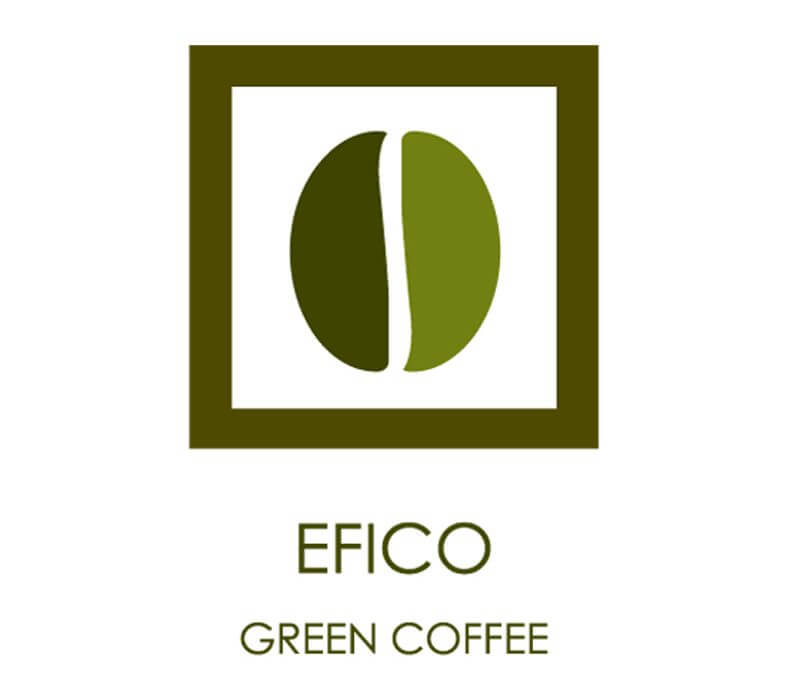
“In supporting WCR’s program, EFICO proactively seeks for long term solutions towards farmers’ resilience and profitability, climate change and sustainable and productive coffee landscapes,” says EFICO Group CEO Michel Germanès (World Coffee Research Press Release, 2018).
While the organisation’s core work will continue to focus on genetic improvement, WCR says it seeks to work across the entire “innovation pipeline” to provide farmers with greater access to improved seed varieties.
“The strategy’s primary objectives are to foster increases in productivity, profitability, and climate resilience, to enhance quality across major market segments, and to mitigate supply risk and advance against climate mitigation goals in 11 strategic countries,” the report states.
“Prioritising origin diversity ensures the coffee industry can access the unique flavours that coffee drinkers want, and coffee businesses rely on, and distributes the economic benefits of coffee-to-coffee farmers in key origins.”

Smiling man and woman group of coffee lovers sitting and standing around big cup of hot coffee drinking it with mugs in hands. Flat style vector character concept illustration
Designed to link market demand and national research programs, WCR seeks to create tools and approaches to accelerate progress in coffee agricultural research. This is to increase value for the global industry and the farmers and consumers within (Global Coffee Report, 2021).
Bibliography
Global Coffee Report. (2021). World Coffee Research releases highlights in 2020 Annual Report. Retrieved July 29, 2021, from Global Coffee Report website: https://gcrmag.com/world-coffee-research-releases-highlights-in-2020-annual-report/
Wikipedia. (2021). World Coffee Research. Retrieved July 29, 2021, from Wikipedia website: https://en.wikipedia.org/wiki/World_Coffee_Research
World Coffee Research. (2021). Annual Report 2020. Ensuring the future of coffee. Retrieved July 29, 2021, from World Coffee Research website: https://worldcoffeeresearch.org/work/annual-report-2020/
World Coffee Research Press Release. (2018). EFICO Group to support world coffee research global coffee monitoring program. Retrieved July 29, 2021, from EFICO website: https://efico.com/press-foundation/efico-group-to-support-world-coffee-research-global-coffee-monitoring-program/
Article written by Marco Dorigo
Picture credits: when not otherwise specified, the pictures were purchased by the ArtOn Café director
